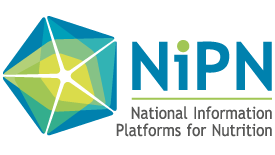Short history of the evolution of the parameters used to calculate AARR
- 2007: UNICEF produced the technical note n°185 to generate AARR of underweight prevalence .
- 2012: Endorsement of WHA nutrition targets for 2025.
- 2013: The European Commission developed the EU 2014-2020 Nutrition Action Plan. In collaboration with WHO, the European Commission developed an excel tool & a method for generating AARR.
- 2013: WHO modified the Excel tool using the methodology described by De Onis et al. to develop the Global Nutrition Targets Tracking Tool (de Onis, G. Dewey, Borghi, W. Onyango, Blössner, Daelmans, Piwoz and Branca. 2013. The World Health Organization’s global target for reducing childhood stunting by 2025: rationale and proposed actions).
- 2014: The Global Nutrition Report (GNR) is released including estimation of AARR using methodology described by De Onis et al. in 2013.
- 2015-2016: The GNR of 2015 and 2016 are released using different monitoring progress indicators than GNR 2014.
- 2017: The WHO and UNICEF Technical Expert Advisory Group on Nutrition (TEAM) published a key technical report recommending an updated methodology for monitoring AARR.
- 2017: The European Commission published a methodological note explaining why they maintain their initial methodology.
- 2017: The GNR 2017 is released endorsing the June 2017 TEAM recommendations.
- 2017: The WHO tracking tool v2.3 produces a technical note ensuring coherence with TEAM recommendations.


